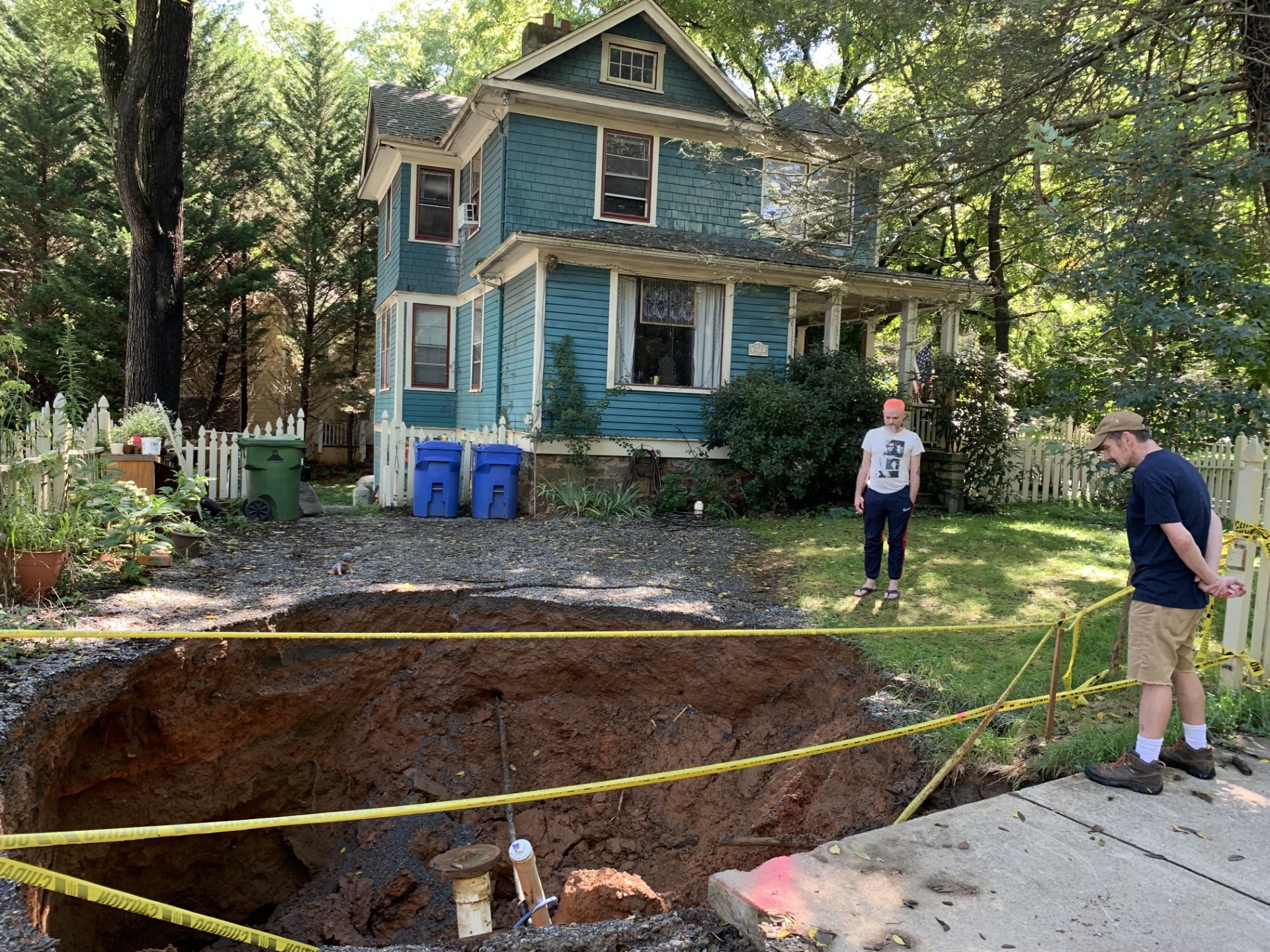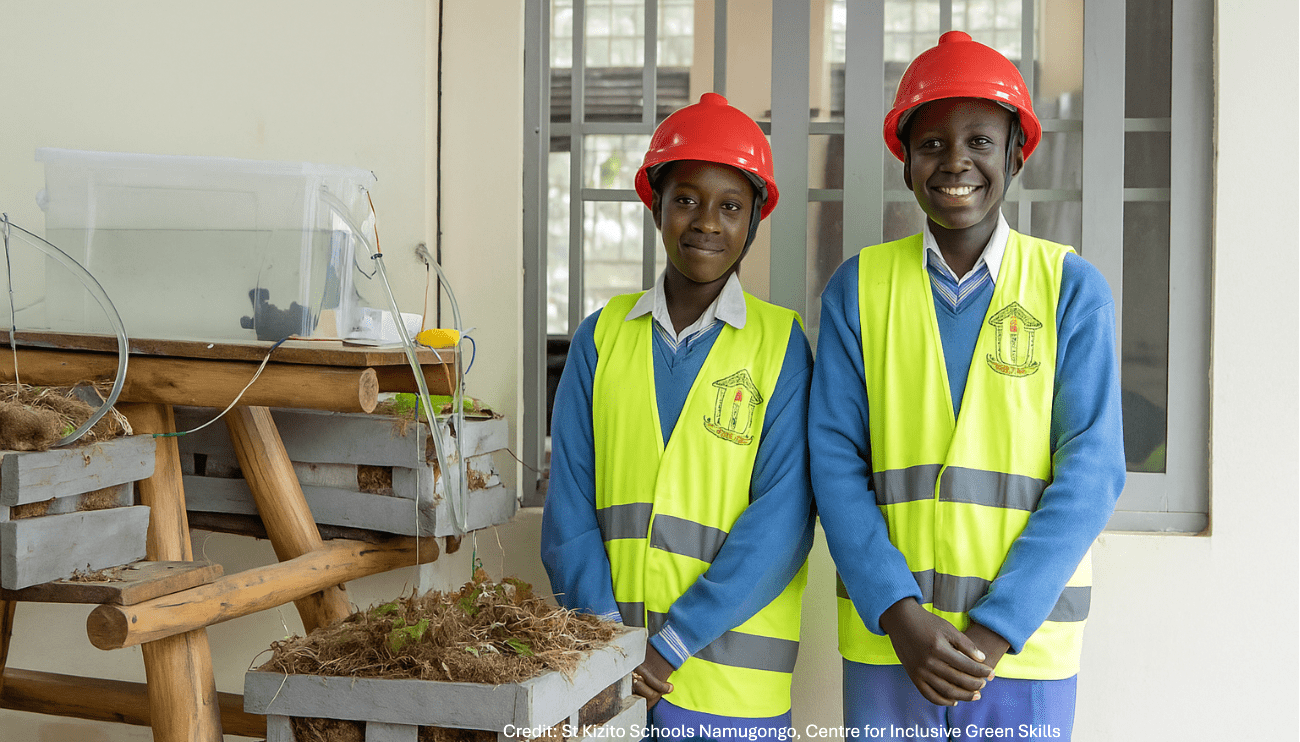Lauren Bacchus is one of many people in Asheville who are strangely enamored with the city’s sinkholes.
She’s a member of the Asheville Sinkhole Group, an online watering hole of more than 3,400 people in and around this North Carolina city who eagerly discuss the chasms that mysteriously emerge from time to time. She even owns a T-shirt emblazoned with the phrase “For the love of all things holey.” Bacchus concedes sinkholes are an odd thing to be passionate about, but they speak to the impermanence of things made by human hands.
“I don’t want to discredit that sinkholes can cause a lot of damage and hurt people, but they do evoke this feeling of excitement and curiosity and mystery,” she said. “It’s a void that opens up where you thought something was solid. That’s the reality of the ground we walk on all the time.”
The Facebook group recently enjoyed renewed interest when a small pit appeared at an intersection near a storm-damaged area on the outskirts of town late last month. “Oh, we’re so back,” one user wrote.
Given the flooding and busted pipes that followed Hurricane Helene, sinkholes have become a pressing problem for a vast swath of the region. Roads already battered by record flooding are pocked by the blemishes, which can be anywhere from a few inches to several feet in diameter — though particularly monstrous ones can reach hundreds of feet wide and hundreds of feet deep. A marked increase in their numbers has been keeping road crews busy In Asheville, according to spokesperson Kim Miller.
“The uptick has impacted staff workload,” she said.
Such dints can appear quickly, or over long periods of time. They also can occur naturally, or as the result of humans altering the landscape. Whatever their speed and cause, they are almost always the result of something or someone altering the natural flow of water underground — a problem exacerbated by the extreme rain often brought on by climate change. Over time, these anomalies grow and grow, unseen, until reaching the surface and causing an abrupt cave-in.
Jason Armond / Los Angeles Times via Getty Images
The country’s biggest open sinkhole, Golly Hole, opened 52 years ago in Alabama, creating a rift 350 feet wide and 100 feet deep. But even small ones can be horrendously expensive; all told, sinkholes may have cost the country over $300 million annually during the past 15 years. No one maintains a master list of them, and the U.S. Geological Survey says most are probably never reported. Still, there’s enough data to know the majority occur in states like Tennessee, Kentucky, Florida, and Pennsylvania, where soft, porous bedrock is liable to dissolve.
The “sinkhole capital” award might go to Florida, which has seen these craters proliferate after large storms like Tropical Storm Debby in August and Hurricane Milton in October, devouring backyards and chunks of road. Some experts on the matter say that “sinkhole season” takes over as hurricane season winds down.
Sinkholes are also complicated to resolve: Many states don’t requireask homeowners’ insurance to cover them, leaving many people to deal with a big problem on their own. Florida and Tennessee are among the few states that require disclosing past occurrences to anyone buying a house, though those laws are antiquated and lawmakers have been pushing for updates.
Regardless of the annoyance, sinkholes have seen a lot of love in Asheville.
Bacchus joined the sinkhole group just after its founding in 2019, when a particularly monstrous example swallowed a parking lot in a cavity 36 feet wide and 30 feet deep. That story made national headlines. The owners of the land tried, without success, to fill it with concrete before the city declared that the building on the site was too dangerous to occupy. It remained vacant for years while the corroded piping that caused the sinkhole was repaired.
Late last year, a Waffle House in the nearby Mars Hill suffered a similar fate. The day before Helene brought record flooding, a sinkhole took out much of the diner’s parking lot, ultimately leading the owners to shut down.
Much of Appalachia sits on porous limestone, made of the compressed shells of sea creatures that, millions of years ago, swam and scuttled in shallow seas. This topography, called karst, is full of tunnels and caves. USGS maps paint much of Tennessee, Kentucky, and Virginia in a bright-red high-risk sinkhole zone. The nuisances have threatened, among other things, a Corvette museum in Kentucky, a police station in West Virginia, and a shopping mall in East Tennessee. For years, a sinkhole at the bottom of the Tennessee Valley Authority’s Boone Dam drained it like a bathtub. These geologic formations are an expensive nuisance, and occasionally tragic. A Pennsylvania grandmother died late last year after falling into one while looking for her missing cat.
In Western North Carolina, and other areas with notably no limestone, sinkholes are mainly the result of human intervention – construction fill, bad plumbing, and choices made by developers and builders that result in water going places it shouldn’t.
However they arise, sinkholes have an insatiable quality to them, often expanding in ways that make them difficult and sometimes impossible to repair. But they also create a sense of wonder and fascination – the feeling of peering into another time. By opening a window into a subterranean world of water, fossils, and caves, they offer a glimpse of what came before.
And, experts say, we might see more of them as a warming world makes big storms more common. Ernst Kastning, a retired geology professor who taught at Radford University in Virginia, said sinkholes are often a natural reaction to a sudden change, like torrential rain. They can form as all that precipitation flows downhill, such as via an underground cave system. “The water has to come out somewhere,” Kastning said.

Jason Sandford
After an intense downpour or sudden inundation, the land attempts to restore equilibrium, which often means water and soil move into inconvenient places. Geologists colloquially call this the earth’s “plumbing system” — the complex network of underground drainage pathways that are a part of the water cycle. Human-caused sinkholes can force a similar reaction through artificially creating what scientists call “void space” in the ground. This affects how much water the soil can hold and can cause it to collapse.
“If you come in there and dig something or put in something or build something or modify the water flow … you’re likely to have nature react to that,” Kastning said. In particular, pumping water out of aquifers and pouring concrete or asphalt, for foundations or roads, for example, causes depressions and allows sinkholes to form.
While these depressions can be caused by a variety of factors, the main culprit is rain. Warm temperatures can also make the ground and the rock within it softer. Sinkholes after a storm like Helene, Kastning said, are part of nature’s way of righting itself. But if big storms happen more often, so will sinkholes. “The frequency of these things is increasing,” he said.
But so too are the unique opportunities they present.
On a sunny April afternoon, three scientists walked across an ancient sinkhole, long since filled in and covered in grass, on the Gray Fossil Site in Gray, Tennessee. Active archaeological digs are currently covered with black plastic and protected by fences.
The 4.5-acre, 144-foot deep pit and surrounding forest once provided water to prehistoric animals and, when they died, served as their grave. As museum collections manager Matthew Inabinett put it, “When a place is a good place to live, it’s also a good place to die!”
Gray Fossil allows scientists to peer 4.5 million years into the past. Of course, they’ve only (literally) scraped the surface. “We’ve estimated a few tens of thousands of years at current rates to excavate to the bottom,” said fossil site Americorps member Shay Maden. “So we’ve got job security on that front for sure.”
They’ve found fossils of exciting species like giant flying squirrels and mastodons, but also have seen more familiar faces, including rhinos (one of which the team named Papaw, since he died at an advanced age) and tropical reptiles. The site, Inabinett said, has become a scrying glass to understand climate conditions of the past. It can also suggest what things might look like in a world a few degrees warmer than today.
Many of the fossils found so far are from the Pliocene epoch, which ended about 2.6 million years ago and was about 3 degrees Celsius warmer than now. That’s also about how much warmer Earth is projected to grow by 2100. Oceans were about 25 feet higher back then, and alligators lived in Appalachia. The region’s biodiversity, once among the greatest in the world, survived multiple periods of extreme heat and cold. Later, the humid climate of the Pliocene quickly succumbed to the Ice Age.
Because silt flows toward the ocean, the Appalachian region has few easily accessible fossils, making Gray Fossil a primary window into the ancient past. “The Southern Appalachians are one of the most biodiverse regions in North America,” Inabinett said. “To study this time period, the early Pliocene, is really useful for understanding how that diversity originated.”
While not every sinkhole opens a prehistoric portal, even the most mundane of them taps into something primal. For Bacchus, who goes on regular walks to check new and growing sinkholes, they represent the concept of “the void,” and bring an opportunity for people to reflect on concepts bigger than themselves.
“I am attracted to sinkholes because of the humbling feeling they evoke,” she said. “I am reminded I am a small animal on this planet, and there’s more going on below the surface than we may realize.”
Source link
Katie Myers grist.org



